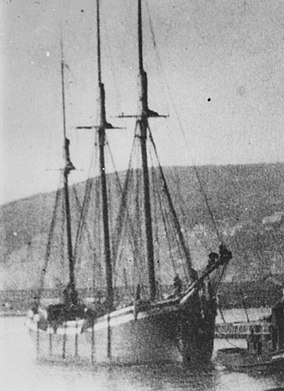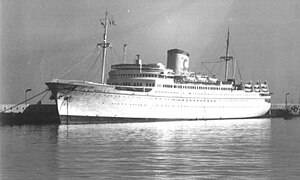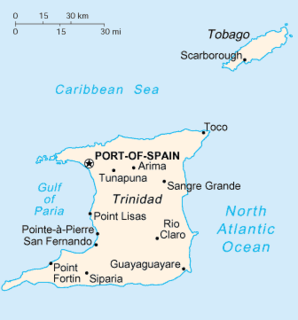
The USS New Hampshire (1864) was a 2,633 ton ship originally designed to be the 74-gun ship of the line Alabama, but she remained on the stocks for nearly 40 years, well into the age of steam, before being renamed and launched as a storeship and depot ship during the American Civil War. She was later renamed to USS Granite State.

USS Whale (SS-239), a Gato-class submarine, was the second ship of the United States Navy to be named for a whale, an extremely large, aquatic mammal that is fishlike in form. The USS Cachalot (SS-170) commissioned on 1 December 1933 preceded the Whale.

USS Sunfish (SS-281), a Gato-class submarine, was the first ship of the United States Navy to be named for the ocean sunfish, Mola Mola, a plectognath marine fish, having a deep body truncated behind, and high dorsal and anal fins.

USS Balao (SS/AGSS-285) was the lead ship of the United States Navy's Balao-class submarines during World War II and named for the balao, a small schooling marine fish.

USS Crevalle (SS/AGSS-291), a Balao-class submarine, was a ship of the United States Navy named for the crevalle, the yellow mackerel, a food fish, found on both coasts of tropical America, and in the Atlantic as far north as Cape Cod.

USS Apogon (SS-308), a Balao-class submarine, was a ship of the United States Navy named for the apogon, a group of large-headed salt water fishes with oblong compressed bodies found in tropical or subtropical waters. The original name planned for the ship was Abadejo, but the name was changed on 24 September 1942 before the keel was laid down.

USS Pintado (SS-387/AGSS-387), a Balao-class submarine, was the first ship of the United States Navy to be named for the pintado.

Flandre, also known as Carla C, Carla Costa, and Pallas Athena, was an ocean liner and cruise ship that took passengers on transatlantic voyages and on Caribbean and Mediterranean cruises from 1952 to 1994. She was operated by the French Line, Costa Cruises, and the Epirotiki Line.

SS Borinquen was a passenger liner which was built in the United States in 1931. After being requisitioned for troop transport service by the United States Army for World War II and continued service post war the ship was sold in 1949 and became the Arosa Star. After further sales and change in the cruise ship regulations the ship was again sold and grounded as La Jenelle on the California coast in 1970.

USS Amesbury (DE-66/APD-46), a Buckley-class destroyer escort of the United States Navy, was named in honor of Lieutenant (jg) Stanton Morgan Amesbury (1916–1942), who was killed in action while flying from the aircraft carrier Ranger (CV-4) during Operation Torch in 1942.

Costa Crociere S.p.A., operating as Costa Cruises, is an Italian cruise line, based in Genoa, Italy, owned by Carnival Corporation & plc.
City of Washington was an American merchant steamship that aided in rescuing the crew of the USS Maine when it exploded in the harbor of Havana, Cuba, in 1898.

The USS Puritan, a civilian transport built by Craig Shipbuilding Company in Toledo, Ohio, was launched in 1901, and lengthened by 26 ft (7.9 m) in 1908. The ship sailed on the Great Lakes in passenger service, was purchased by the U.S. Navy at the end of the war, and returned to passenger service after the war. The ship sank in 1933 near Isle Royale in Lake Superior, and its wreck is listed on the National Register of Historic Places.

USS Whippoorwill (AM-35) was a Lapwing-class minesweeper acquired by the United States Navy for the dangerous task of removing mines from minefields laid in the water to prevent ships from passing.

Samuel P. Ely is a shipwreck in Two Harbors, Minnesota listed on the National Register of Historic Places. She was a schooner that sailed the Great Lakes carrying iron ore, coal, and other bulk freight. She was built in 1869 and was a fairly typical example of the 200-foot schooner built in the 1870s, though she was reinforced for the demands of carrying iron ore.

The Hilma Hooker is a shipwreck in Bonaire in the Caribbean Netherlands. It is a popular wreck diving site.

Lavia was a cruise ship that caught fire and sank in Hong Kong Harbour in 1989. She was built for Cunard White Star Line in 1947 as the cargo liner Media. In 1961 she was sold to Italy, rebuilt as an ocean liner and renamed Flavia. In 1969, she was refitted as a cruise ship and renamed Flavian. In 1982 she was sold to Panama and renamed Lavia. She was undergoing a refit when the fire occurred. The damage to her was so great that she was scrapped.

The Henry Chisholm was a wooden freighter; it was sunk off the shore of Isle Royale in Lake Superior in 1898 and the remains are still on the lake bottom. The wreck was placed on the National Register of Historic Places in 1984.
The following index is provided as an overview of and topical guide to recreational dive sites:
































